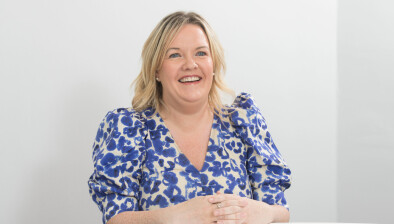Blog: The great business rate debate continues to rage on

By Iain McGhee, valuation and rating partner at Knight Frank LLP
Business rates has rarely, if ever, received so much attention across mainstream print and digital media as in recent weeks. Since the turn of the year there have been numerous articles, including many front-page headlines, about the forthcoming evaluation and its potential implications for ratepayers across the country.
Before Christmas, I wrote that it would be one of the most contentious revaluations of recent times, given the volatility of the property market during the period since the last revaluation in 2010. It’s fair to say that this prediction has come to pass – although, no one could claim to have foreseen how much of a political hot potato this issue would become.
Following much debate, the Scottish Government has announced a cap of 12.5 per centon rises for the hospitality sector, to help mitigate the potential impact on the industry. While it is said the move will help 8,500 hotels, pubs, restaurants, and cafes, semantics could play a big role here: where exactly does the hospitality sector end, and the leisure and tourism sectors begin?
On the face of it, a cap for one segment of the economy, likely to be affected more than most, sounds like a positive move. However, in practical terms, there are some serious issues – not least the ambiguity around the definition of different sectors. Others could rightly feel aggrieved that they don’t quite match the criteria for relief.
Take for example on of Scotland’s most iconic buildings, Edinburgh Castle: it’s facing a rise of 450 per cent, from £326,000 to £1.795 million. An increase in costs of that magnitude could have serious implications. Edinburgh Castle, to all intents and purposes, could feasibly be considered part of the hospitality sector and there are a vast number of businesses that directly rely on the castle for trade. There needs to be a recognition of the fact that the hospitality, leisure and tourism markets are inextricably linked, particularly in Scotland’s major cities.
The same is true when it comes to the other aspect of the additional relief announced this week: the same 12.5 per cent cap on rates rises for offices in Aberdeen and the city’s surrounds. No one would dispute that the north east has gone through a particularly challenging time in the wake of the oil price drop – but it hasn’t only affected the 1,000 or so offices that will be helped by the transitional relief. There is an argument for extending this relief to industrial properties, which have also seen sizeable increases in their annual rates burden against the same economic backdrop.
Amid all of the recent headlines, claims and counter-claims, it can be difficult to retain a focus on the facts and take a step back. Businesses need to obtain the right advice to make sure the appropriate steps are taken – that could mean lodging an appeal against your revised rateable value, which is the basis for the rates you pay.
There is a great deal of detail still to come on how business rates will take shape after April. No doubt that will continue to generate headlines in the weeks ahead. Nevertheless, organisations of all shapes and sizes should keep an eye on any changes emerging – if Edinburgh Castle demonstrates anything, it’s that ignoring the issue could prove very costly.








